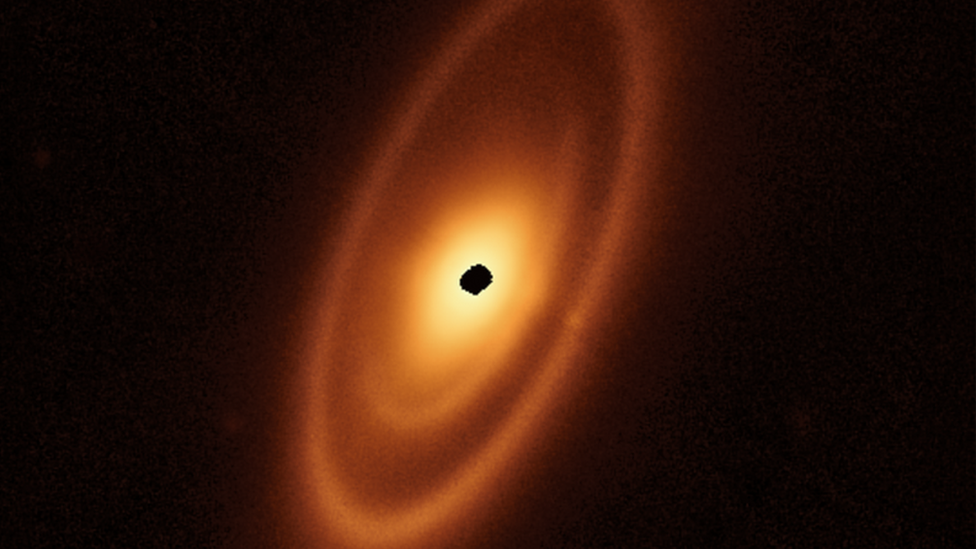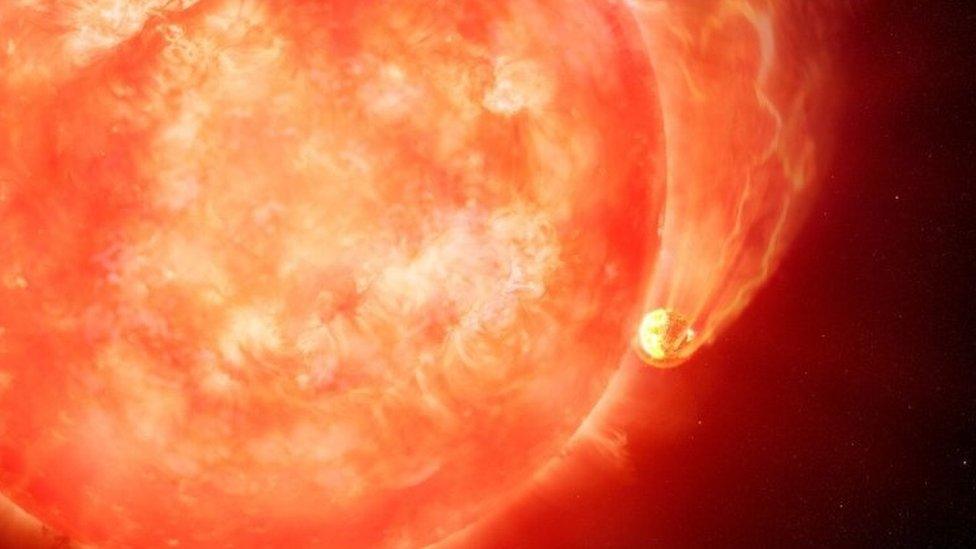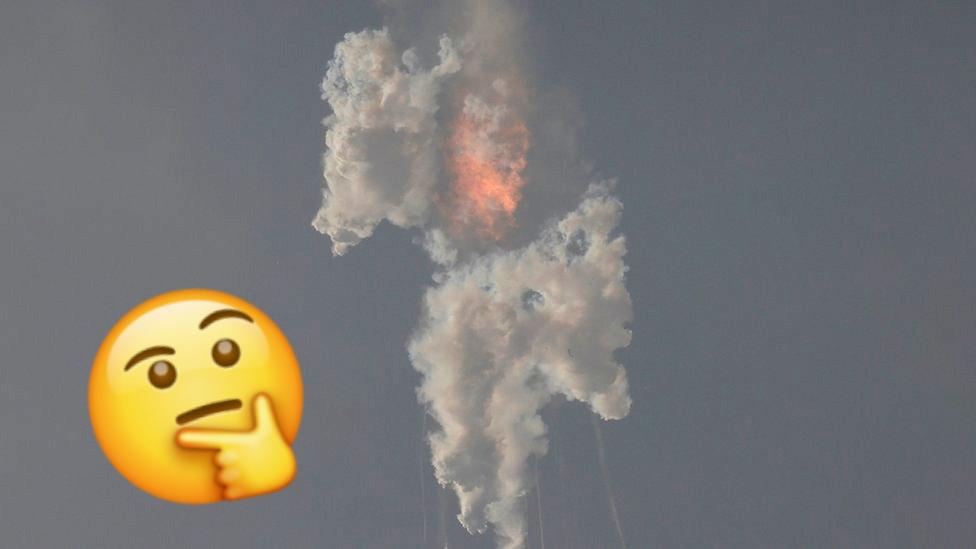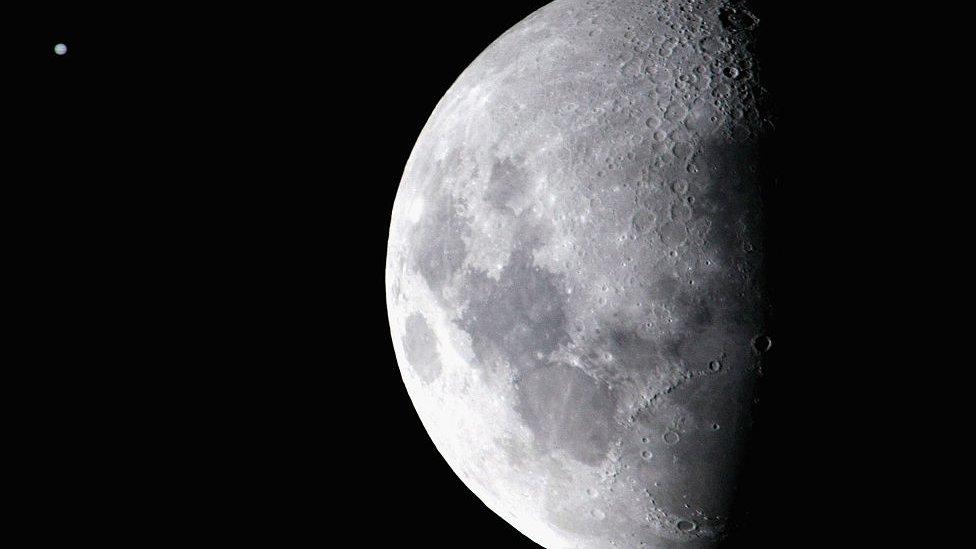Nasa's James Webb telescope gets photo of dust rings
- Published
- comments

The world's biggest telescope, the James Webb telescope has snapped an image of asteroid belt and a dust cloud surrounding one of the nearest stars to Earth.
Fomalhaut is located 25 light years away from Earth and is one of the brightest stars in the night sky.
Overall, there are three belts around the star.
The inner belts - which had never been seen before - were revealed by Webb for the first time.
The largest of the rings extends 14 billion miles away from its host star (about 150 times the distance between Earth and the Sun.)
The Hubble Space Telescope has previously taken images of the outermost belt.
The inner belts have been resolved for the first time by Webb in infrared light.
"Where Webb really excels is that we're able to physically resolve the thermal glow from dust in those inner regions. So you can see inner belts that we could never see before," said Schuyler Wolff, a member of the team at the University of Arizona who contributed to a paper on the findings.
It's believed the big dust cloud could be from a collision occurring in the outer ring between two larger bodies similar to asteroids.
Previously what was thought to be a massive exoplanet which was captured by Hubble orbiting Fomalhaut has since been revealed to most probably be a dispersing cloud of dust.
Some experts believe there is probably a planet or two already in orbit around the Fomalhaut.
George Rieke, another team member and US science lead for Webb's Mid-Infrared Instrument (MIRI), which made these observations said "I think it's not a very big leap to say there's probably a really interesting planetary system around the star."
- Published9 May 2023

- Published20 April 2023

- Published4 January 2023

